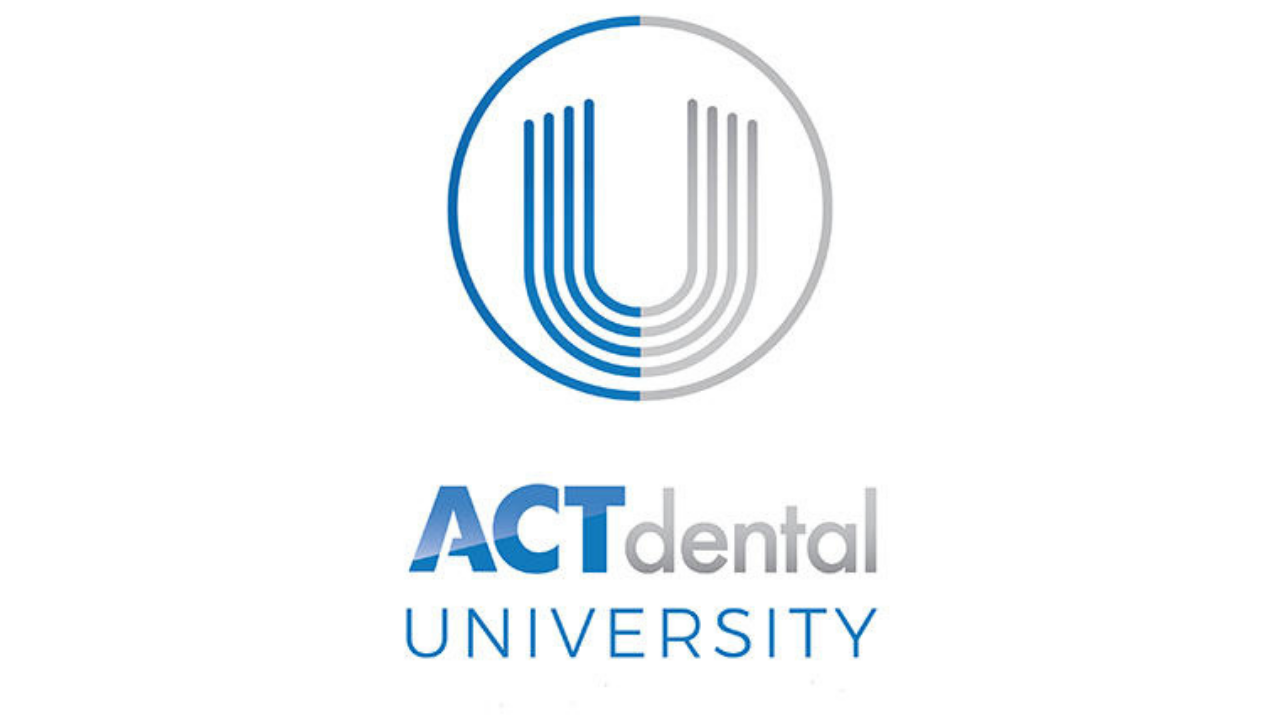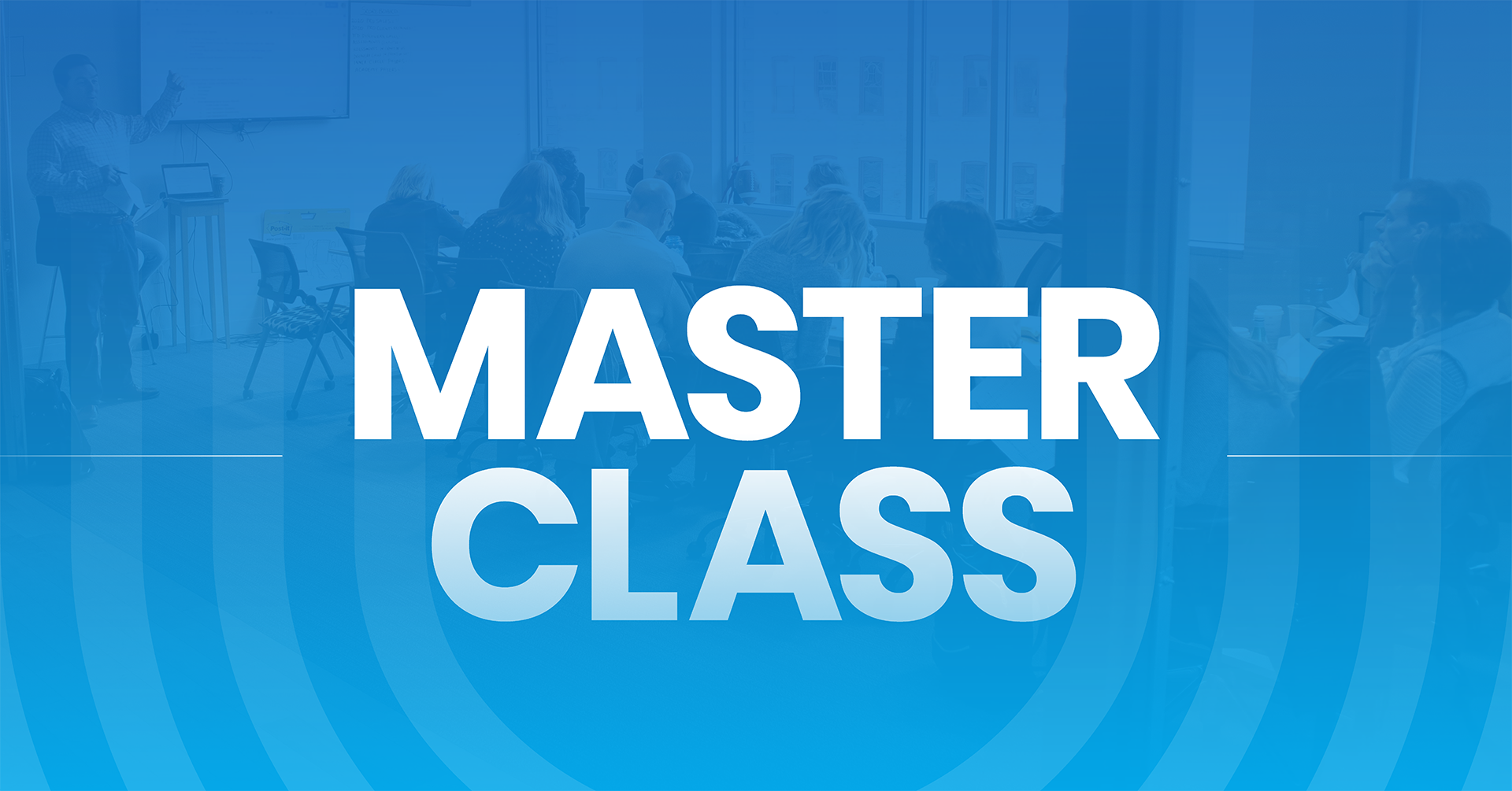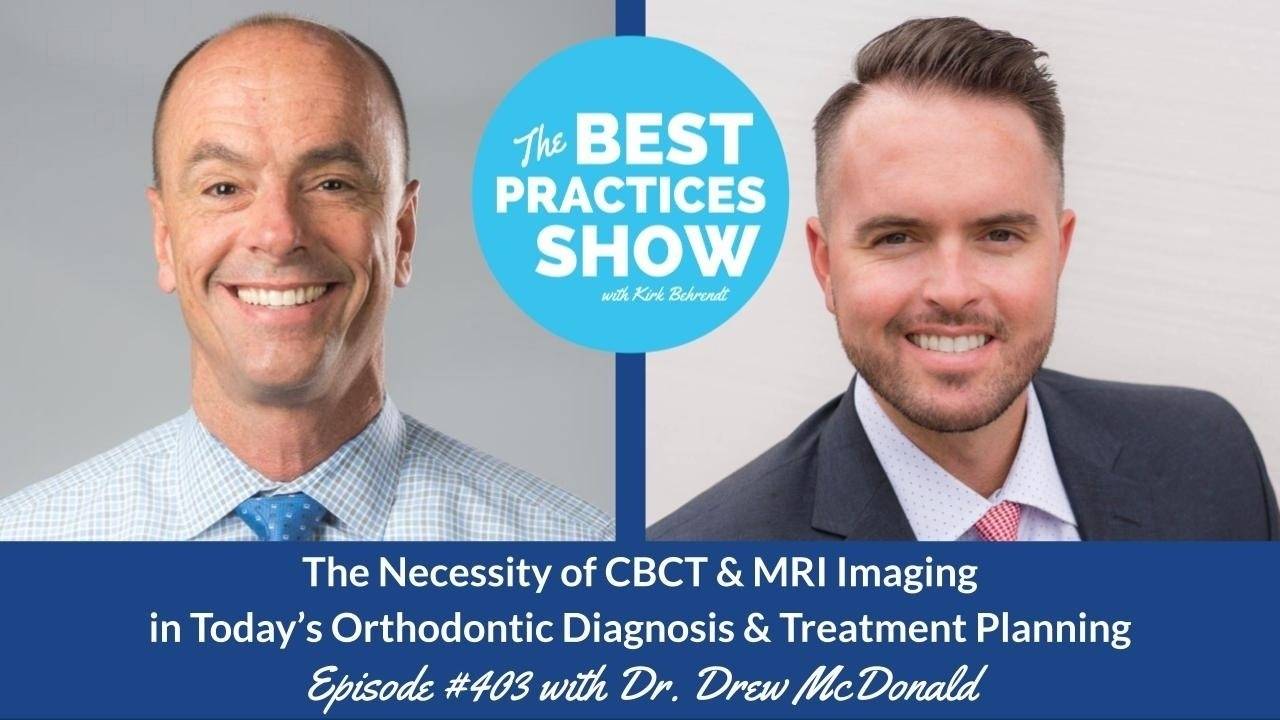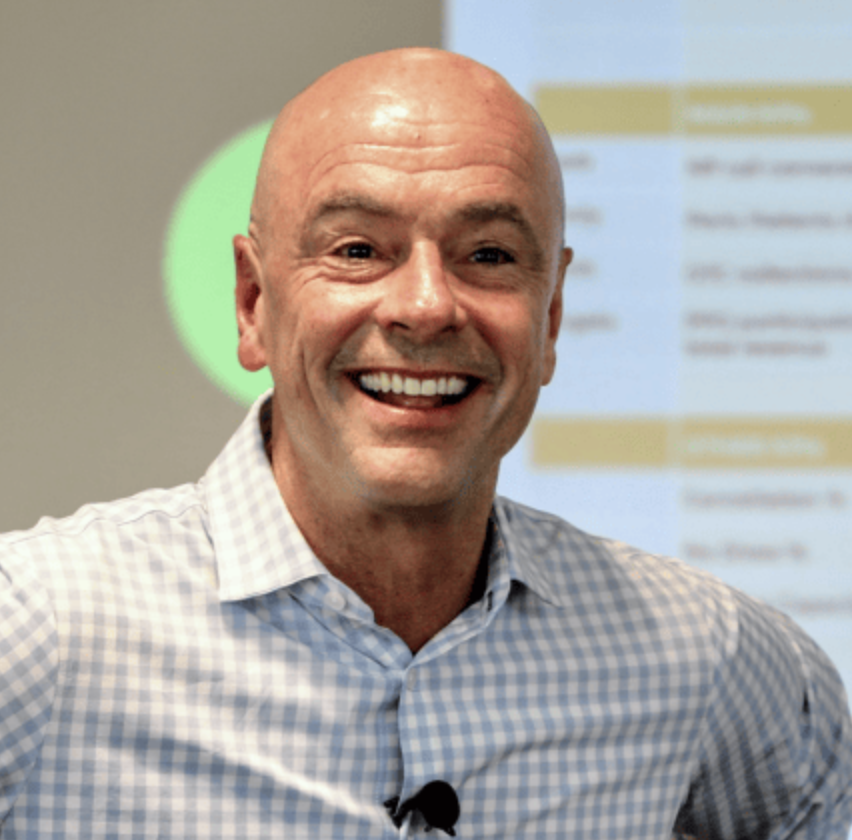
Without imaging, you're basically guessing treatment plans — and that’s never a good thing! To know the best possible treatment for your patients, you need MRIs and CBCT. And to help you get started, Kirk Behrendt brings back Dr. Drew McDonald to talk about the pushback with imaging as well as the benefits and value they have for you and your patients. Don't go into treatment blindly! You can have clear images that present the truth. To be a better clinician that changes patients’ lives, listen to Episode 403 of The Best Practices Show!
Main Takeaways:
- A clear image will help you see under the surface.
- MRIs can show the severity of joint instability.
- CBCTs and MRIs are safer than ever before.
- Having images can increase case acceptance.
- Imaging will lead the way to being better clinicians.
Quotes:
- “The biggest thing of why [it’s important], for me, on what we’re talking about with imaging is that it’s the truth. You can't fake that. It’s right there in front of you in the cold, black mirror that you're looking at on that X-ray or that MRI. And ultimately, it tells your patients the truth. But for me, whenever I started going down the road of, ‘Okay, let's see what's under the surface. Let's see why this patient isn't responding the way that I anticipated,’ that really shed a lot of light on what are the true problems here.” (13:19—13:49)
- “The other unpleasant conversation that you get to have with patients when [relapse] happens is, ‘Well, I thought this was going to stay. Why didn’t it?’ And it starts to look like you, as the doctor, didn't do your job. Well, no. If you did your job at the front end and diagnosed and said, ‘Hey, we need to take care of not just the teeth but these issues to keep this stable,’ then you really did your job and you're in the clear as a doctor.” (14:21—14:46)
- “Right now, in dentistry, the biggest evolving part of this profession is on the imaging side. I think we’re in a huge revolution of how we’re going to do dentistry, where everything is going to be in 3D and people are going to routinely do MRIs, not just TMJ specialists. In my world, I think I'm one of the few orthodontists that do it. But it’s going to be widespread. And honestly, it gives so much value to the patient. We treat them to the highest standard of care possible instead of limiting what we could do.” (16:15—16:48)
- “I started looking at my 2D X-rays and then looking at the 3D and saying, ‘Well, I can kind of see this on the 2D.’ On a lateral ceph, you can see adenoids. It’s clear as day. You can see tonsils clear as day. So, you don't necessarily have to be totally in the 3D world, at this moment, to be able to start looking for the things that we should be looking for. I mean, on a pano, you can see turbinates clear as day on a lot of patients and see noses really well. And also, the biggest thing, you can see joints. So, just in our every day, what you take as a general dentist, what you take as an orthodontist, those images are still very valuable if you know where to look besides just the pearly white things in this little area right here.” (18:37—19:21)
- “I started saying, ‘Okay, maybe I should be doing [imaging] on a few more patients,’ because I'm starting to see maybe this is part of their problem. But I was recognizing surface issues like narrow palates and things that then I go, ‘Well, maybe I should see if there's something causing this under the surface.’ And then, at that point, you show the patient, and they go, ‘Yeah, let's follow up on that ENT referral.’ I never thought, as a dentist, I'd be writing as many ENT referrals and chiropractic referrals and TMJ stuff that's never thought of as part of your world, but it certainly is.” (19:28—20:04)
- “One of the most valuable pieces of having imaging behind it is I could go to the ENTs and say, ‘Hey, here are these pictures of this patient’s nose. This is helpful for you to diagnose and make a plan, and I'm going to send these on every patient that I send you to. Is this helpful, and what do you see?’ And I talked with one ENT, in particular. Initially, they were like, ‘Well, I never routinely had those in front of me on these patients. But now, I see it.’ And so, then the imaging side really did start to open up other people’s eyes as to, ‘Okay. Well, that's not just wishy-washy. That's hard and fast right in front of you with that image. And so, what do we do now?’ Instead of guessing or saying, ‘Let's watch it,’ [it’s] like, ‘Hey, we can see the enemy. Let's go for it.’” (21:06—21:52)
- “At the end of the day, [imaging] really does open your eyes on the airway front, especially as to the health benefits that we can have for these patients, and that we can really create a better systemic situation for them, not just a teeth situation up here.” (27:05—27:21)
- “I had to have jaw surgery. I was so Class III, just a classic mouth-breather, tongue-tied patient. And essentially, [when] I was in my 30s and had jaw surgical correction and a nasal septoplasty, I was like, ‘Wow, I can actually breathe through my nose. This is great.’ Ultimately, I lived my whole life like this: I couldn't smell coffee. I couldn't do this, this, and the other. But I didn't know about that. I didn't know I needed septoplasty and things done until I saw it on the CBCT, and I was like, ‘Damn, no wonder I can't breathe.’” (28:21—29:00)
- “The other big thing, back to the inflammatory side, you don't know how inflamed that joint is until you see it on the MRI. And there are some people you're like, ‘Damn, we’re fighting a forest fire here. There is no way this splint is going to be good for you, or the right kind of matchup. We need to manage this this way before we get into ortho.’ And for some patients, it says, ‘Wow, you really do need a surgical procedure,’ like what Dr. Mark Piper and Brian Shah and everybody pioneered and do. And it changes people’s lives.” (31:30—32:04)
- “Sadly, I feel like in a lot of ortho right now, there's pushback on imaging that there shouldn't be. And some people get thrown under the bus for taking CBCTs on patients as part of their ortho workup because a lot of people think it’s over-irradiating a patient. And in this day and age, the CBCT machine that I have and the ones that are coming out that you would buy if you're buying a new one, they have less radiation than — I mean, if you take a pano and a ceph on a 2D thing, my CBCT currently has less radiation out of it that I can see joints, airway — everything under the surface on — than those two old images I used to take.” (35:34—36:19)
- “‘At what level do you feel comfortable going in blind on a case?’ is what I ask those doctors where they're like, ‘Why are you taking the CBCT?’ I'm going, ‘Well, I want to know everything about this patient. I want to know what's going to screw up my nice result. I want to know what I need to be encompassing with my treatment. And ultimately, I want to show the patient too. So, can you get that off your pano and lateral ceph? If you can, good for you. But I need this level to be able to operate at the standard of care I want to provide.’” (36:21—36:54)
- “One of the biggest, most important things I think we all need to embrace in dentistry, not just ortho, is how much we can be part of such a bigger picture for our patients, and that the imaging under the surface allows us to see those things that we can be a bigger part of. And so, on that note, we all need to be very confident in reading CBCTs.” (37:56—38:17)
Snippets:
- 0:00 Introduction.
- 4:49 Dr. McDonald’s background.
- 8:51 In praise of Jim McKee.
- 12:35 Why CBCT and imaging is important.
- 14:48 Don't make big promises in treatment.
- 16:58 How to get started with imaging.
- 20:06 Roadblocks.
- 22:01 Why CBCT is so useful.
- 24:09 What dentists get wrong when looking at CBCT.
- 25:35 Favorite observations in CBCT.
- 27:21 Mouth tape life hack.
- 29:26 Favorite observations in MRI imaging.
- 32:35 Patients own the issues that they can see.
- 34:10 Pushback with using CBCT.
- 37:14 Last thoughts on the necessity of imaging.
- 40:30 Dr. McDonald’s contact information.
Reach Out to Dr. McDonald:
Dr. McDonald’s website: https://www.mcdonaldortho.com/
Dr. McDonald’s Facebook: https://www.facebook.com/drew.mcdonald.984
Dr. McDonald’s social media: @drdrewmcdonald
Resources:
SomniFix mouth strips: https://somnifix.com/products/mouth-strips-snoring-sleep-aids
Chicago Study Club: https://chicagostudyclub.com/
The Piper Education: https://pipererc.com/
Dr. Drew McDonald Bio:
Dr. Drew McDonald is a board-certified orthodontic specialist with a strong focus on airway and temporomandibular joint-focused treatment planning, surgically facilitated orthodontic treatment, and providing complex interdisciplinary care for patients. He lectures internationally on these topics and has contributed to literature and textbooks in these areas. Dr. McDonald is dedicated to advancing the profession of orthodontics and dentistry as a whole.
Born and raised in Tucson, Arizona, Dr. McDonald’s love of baseball brought him to Albuquerque, where he played as a catcher for the Lobos from 2006 to 2008. While attending the University of New Mexico, he met his wife, Emily, a New Mexico native. He also fell in love with the Sandias, green chile, and the near-perfect weather. He graduated from the University of New Mexico in 2008 with a Bachelor of Science degree in biology and a minor in chemistry.
Dr. McDonald attended dental school at the prestigious Creighton University in Omaha, Nebraska. Known for its rigorous academic curriculum and intense clinical training, Dr. McDonald received many academic accolades while at Creighton, including inductions into Omicron Kappa Upsilon (National Dental Honor Society) and Alpha Sigma Nu (Honor Society of Jesuit Universities). He also served in leadership positions as class president and student body president, and on alumni relations committees.
After graduating cum laude from Creighton, Dr. McDonald was accepted as one of only three residents nationwide into the University of Missouri-Kansas City Orthodontics program, a renowned two-and-a-half-year, full-time residency known for its clinical excellence. Dr. McDonald graduated in December of 2016 with his certificate in orthodontics and master’s degree in Oral and Craniofacial Sciences.
When away from the office, Dr. Drew is a “girl-Dad” to two daughters, a self-proclaimed grill master, and minimally talented yet enthusiastic golfer. You can find him taking in a Lobos game and spending time outdoors with his family.
Categories

Get access to the best dental educators on the planet to bring you "best practices" and help you become the dentist you were called to be. Watch what you want, when you want it. It's 24/7 on-demand access. Friday's we host "Master Classes" with the very best dental speakers you will ever see.

Reserve your spot at the next ACT Dental Master Class
Learn From One of the Best Educators During Our BEST PRACTICES MASTER CLASS Experience.
Kirk Behrendt
Kirk Behrendt is a renowned consultant and speaker in the dental industry, known for his expertise in helping dentists create better practices and better lives. With over 30 years of experience in the field, Kirk has dedicated his professional life to optimizing the best systems and practices in dentistry. Kirk has been a featured speaker at every major dental meeting in the United States. His company, ACT Dental, has consistently been ranked as one of the top dental consultants in Dentistry Today's annual rankings for the past 10 years. In addition, ACT Dental was named one of the fastest-growing companies in the United States by Inc Magazine, appearing on their Inc 5000 list. Kirk's motivational skills are widely recognized in the dental industry. Dr. Peter Dawson of The Dawson Academy has referred to Kirk as "THE best motivator I have ever heard." Kirk has also assembled a trusted team of advisor experts who work with dentists to customize individual solutions that meet their unique needs. When he's not motivating dentists and their teams, Kirk enjoys coaching his children's sports teams and spending time with his amazing wife, Sarah, and their four children, Kinzie, Lily, Zoe, and Bo.
RECENT POSTS
876: The Kois-Coachman Digital Dentistry Event & The IntraOral Scanner Festival – Dr. Christian Coachman
April 18, 2025
Rest Isn't A Reward, It's A Requirement!
April 14, 2025
Data Snapshot: # of Office Days Open
April 11, 2025
Weather Any Storm: The Power of Focus
April 07, 2025
871: Metric Mondays: Gross Profit Percentage: The Health Indicator of Your Practice – Dr. Barrett Straub
April 07, 2025
Embrace Conflict to Unlock Trust
April 04, 2025







